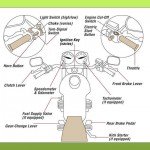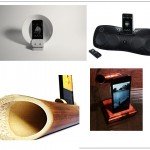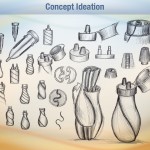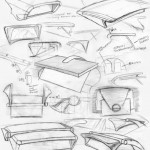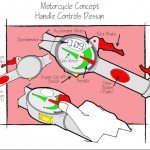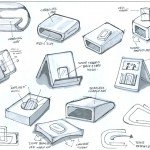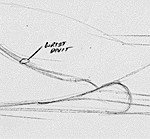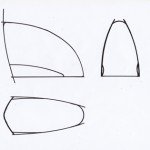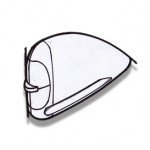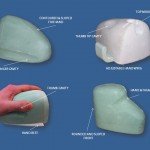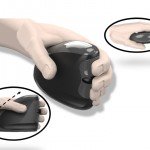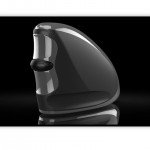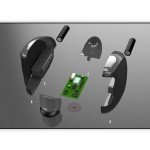Industrial Design Capstone Project
Students complete the design of a product from research and ideation to prototype, and present the finished project to a panel of professional reviewers. This is the last class in the IDT curriculum, and is meant to serve as a transition between the Cincinnati State IDT experience and transfer to a four year school, or an entry level job in the field.
Students completing this course are able to:
• Understand the concepts and principles for the field of Industrial Design, through execution of the semester long design project.
• Understand and have gained experience executing each of the seven steps of the design process as we define them.
• Demonstrate mastery of design research methods.
• Demonstrate mastery of professional industrial design tools and equipment, including software.
• Demonstrate capability in producing professional quality design presentations, including presenting research, concept drawings, computer models and physical prototypes.
• Maintain a professional quality sketch book.
Project Selection & Proposal
Students begin the capstone experience by selecting a project before the end of our second class meeting. Guidelines and examples of past projects are provided so that the students don’t bite off more than they can chew. The rest of the curriculum leading to this point also helps prepare the students for what to expect to be able to accomplish in 15 weeks.
If inspiration doesn’t strike, a list of possible projects is provided, however, students are encouraged to pursue projects that they have a passion for.
Students prepare a project proposal covering what they intend to accomplish. Here is the project proposal template students are provided with:
IDT-290 Project Proposal Template
Research, Inspiration & Ideation
Thorough product and market research are essential on any capstone project. Students employ a variety of research methods throughout the term to identify opportunities for improving the lives of their stakeholders and proposing solutions that are useful, usable and unique. Human factors and materials and manufacturing processes research are critical parts of our design process.
Based on a combination of Milton & Rodger’s “Research Methods for Product Design”, and IDEO’s research philosophy, we categorize our research methods into these four key areas:
• Looking
• Asking
• Making
• Trying
- Jake Anuszkiewicz’s action sports filming market research.
- Jan-Maxwell Johnson’s motorcycle controls research.
- Jourdan Sullivan’s iPhone dock/amplifier research.
- Jourdan Sullivan’s iPhone dock/amplifier research.
Ideation begins with inspiration. I believe that sitting in an room staring at four blank walls typically won’t get you very far if creativity is your goal. I encourage students to get out into the world and explore to gain inspiration. This can be done concurrently with conducting research, or through an unrelated escape for a few hours. Letting your brain rest and process information has been shown to increase productivity in the creative workplace, but striking a good balance between work and play can be tricky. Different people need different stimuli. Our curriculum encourages personal growth in this regard, so that students have a good sense of how to be responsible with this freedom.
Brainstorming and thumbnails come next in the process. Students have experienced two years of sketching practice by this course, so thumbnail concepts are expected to be professional quality. Here are some examples:
- Branden Fox’s packaging concept thumbnails.
- David Cameron Brown’s digital dashboard binnacle thumbnails.
- Jan-Maxwell Johnson’s motorcycle control concept.
- Jourdan Sullivan’s iPhone dock/amplifier thumbnails.
- Jourdan Sullivan’s iPhone dock/amplifier thumbnails.
These ideas can sometimes be based off of assumptions about the user’s needs, if research has not progressed far enough yet. Testing ideas to confirm if a hypothesis is correct is essential.
The Iterative Design Process
As students move through the term, they are expected to create ideas, test and evaluate them, then change or refine them to address their findings. Here is an example of a single product concept (Aaron Watkin’s ergonomic computer mouse) evolving as the term progresses:
Practice, Presentation, Feedback, Adjust, Repeat
Part of the iterative design process involves getting feedback from others on your progress. Our students present to a panel of professionals at three points during the term.
• The first presentation occurs during week 5, when students present their initial research findings and ideation.
• The second presentation is during week 10, when the students present their expanded research, ideation, and final project direction.
• The final presentation is at the end of the term, when the students present their complete project, edited for clarity and supported with digital presentation materials and physical models.
Receiving feedback from professional designers is the primary reason for having multiple presentations, but students also benefit from practicing and rehearsing design presentations in front of a group, and having tight deadlines to work towards.
Here are some examples of recent final project presentations:
Jourdan Sullivan IDT Capstone, 2014


